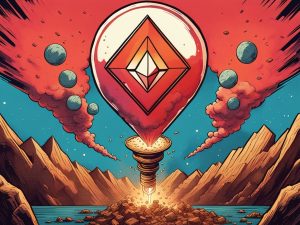The Ethereum DApps ecosystem is booming, offering developers the opportunity to create decentralized applications with their own native coins or nonfungible tokens (NFTs) on secure blockchain networks. If you’re a developer interested in getting started on an Ethereum DApp project, here are some key questions you might have.
DApps, or decentralized applications, are blockchain-based versions of the applications and software we use daily. They are powered by smart contract technology and built on smart contract-enabled blockchains like Ethereum. The main benefits of DApps are that they run on decentralized blockchains controlled by technology or community methods of governance, ensuring higher network security. DApps also utilize cryptocurrencies, making value allocation and transfers easier and more cost-effective than traditional fiat currency transactions.
If you’re already a software or web developer with an understanding of blockchain technology, smart contracts, Solidity programming language, and cryptocurrencies, Ethereum DApp development may come naturally to you. However, there are platforms in development that aim to simplify DApp development for those with less experience. It’s helpful to have some development background before diving into Ethereum DApp development.
Ethereum is often the preferred blockchain for DApp building due to its longevity in the crypto space and popularity. It has a well-established ecosystem for DApp development and offers high decentralized security. However, other smart contract blockchain networks like Solana, Polkadot, BNB Smart Chain, Eos, Tron, and Cardano also have their strengths and weaknesses. The choice of blockchain will depend on the specific requirements and goals of your DApp project.
There are currently over 3,000 DApps running on Ethereum, with more in development. Platforms like DappRadar provide insights into the number of users and transactions processed by each DApp on Ethereum and competitor networks.
Building a DApp on Ethereum has several advantages. Ethereum was the first smart contract blockchain and has a large developer community with repositories of open-source code available. It is also a popular choice for business developers looking to develop their own enterprise-level blockchain initiatives.
Some popular Ethereum DApps include Uniswap, a decentralized exchange (DEX) that has seen over $1 trillion traded on the platform, OpenSea, one of the largest NFT marketplaces with millions of collections and individual NFTs for sale, MetaMask, a user-friendly cryptocurrency wallet and gateway for accessing blockchain-based applications, and Axie Infinity, a popular NFT-based game with an in-play virtual economy.
To start building an Ethereum DApp, consider the purpose and requirements of your DApp. Research Ethereum DApp development tools and processes, as it can be complex and different from conventional web or software development. Ethereum’s Developer Resources is a comprehensive guide for decentralized application tutorials.
When building an Ethereum DApp, consider elements like development environment, tools, and smart contracts; security; front-end development and user experience; testing and debugging; and deployment. Each of these components requires careful planning and attention to ensure a successful project.
The cost of building a DApp on Ethereum can vary depending on your experience and requirements. Experienced developers who use available Ethereum development tools may have lower build costs. Hiring a developer or development team can cost anywhere from $15,000 for a simple DApp to $30,000 or more for a complex project or experienced developer.
There are challenges associated with DApp development on the Ethereum blockchain. Market saturation is one challenge as there are already thousands of DApps competing for attention within the Ethereum community. Scalability, speed, security, interoperability, and decentralization are ongoing challenges faced by all smart contract blockchains. Transaction or gas fees and crypto price volatility can also impact DApps. Availability of expertise in blockchain development is still limited, and smart contracts have technological limitations that developers need to navigate. Additionally, the lack of sector regulation adds uncertainty to the development of digital currencies.
Despite these challenges, the Ethereum DApps ecosystem continues to thrive, offering developers exciting opportunities to create innovative decentralized applications. With careful planning, research, and execution, you can build a successful DApp on Ethereum and contribute to the growing world of decentralized applications.





 By
By
 By
By
 By
By

 By
By
 By
By